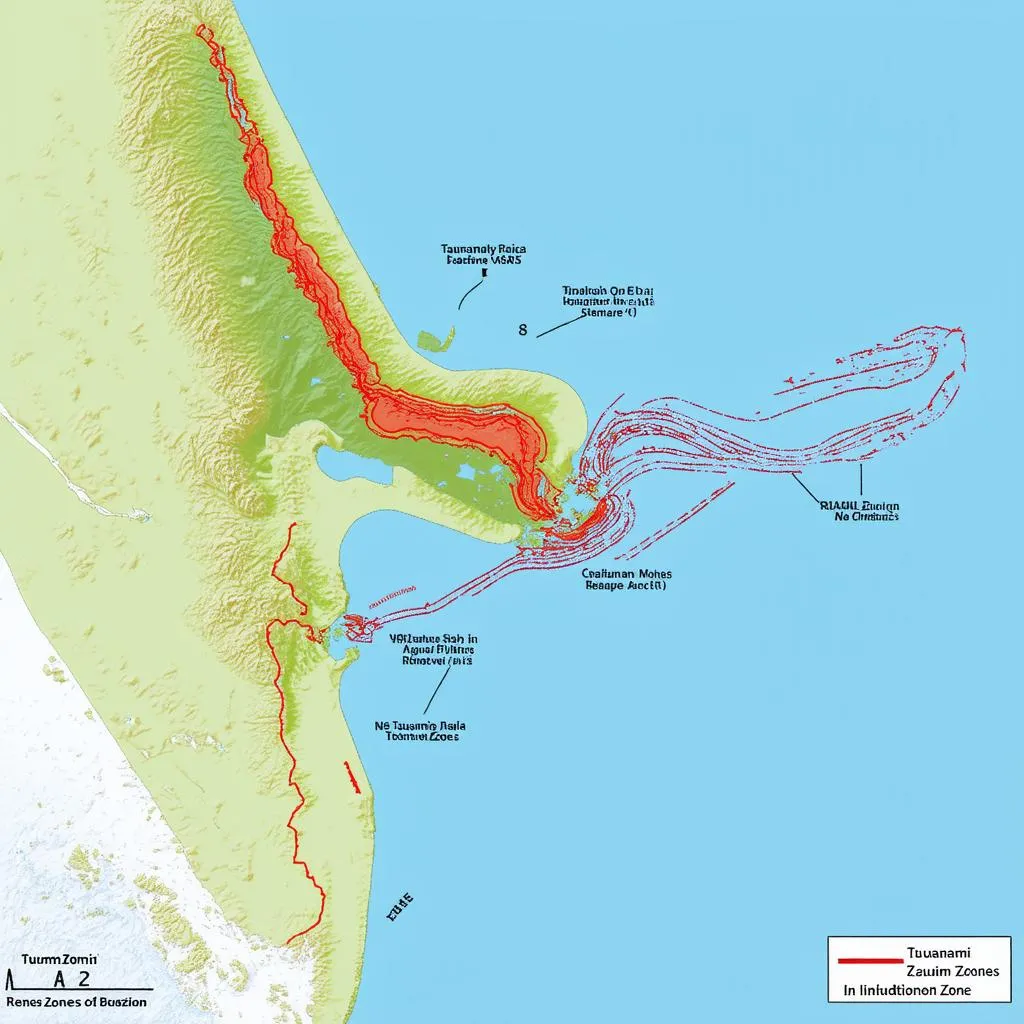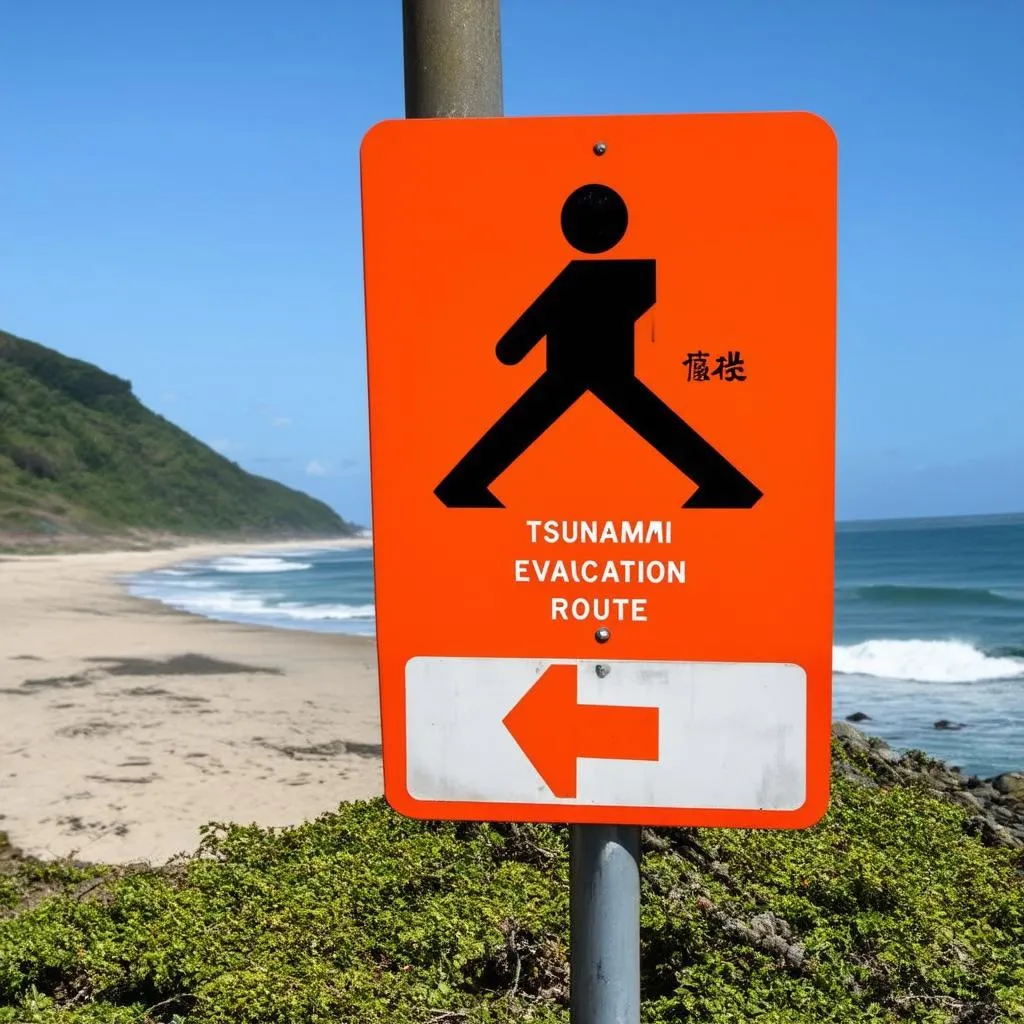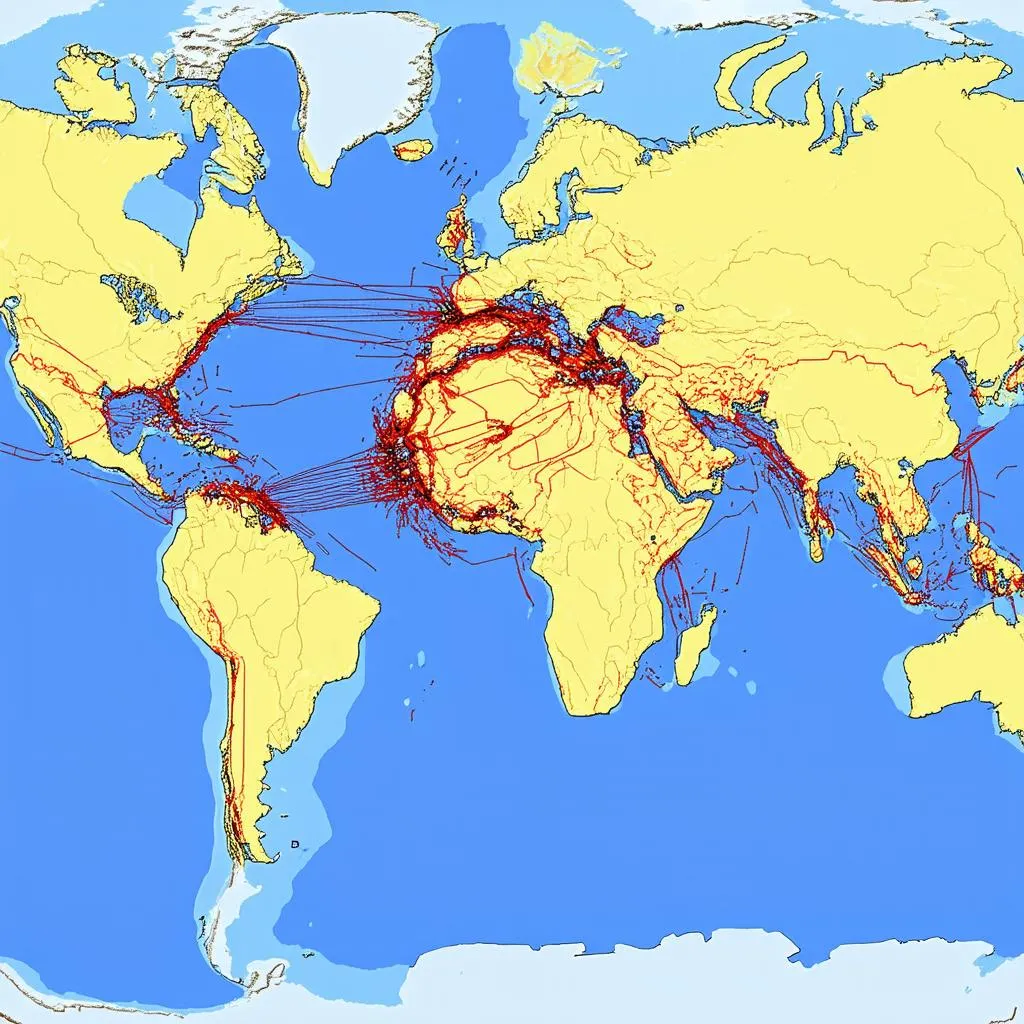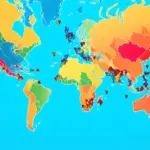“Tsunami.” A single word that can send shivers down your spine, conjuring images of colossal waves crashing into coastlines. But how far inland can these monstrous waves actually travel? The answer, unfortunately, isn’t a simple one. It’s a complex equation involving factors like earthquake magnitude, topography, and even the layout of a city.
Deciphering the Tsunami’s Reach: A Multifaceted Equation
Imagine yourself strolling along the picturesque beaches of Waikiki, Hawaii. The sun is warm, the sand is soft, and the Pacific Ocean stretches before you like an endless turquoise tapestry. Suddenly, the ground beneath you rumbles. An earthquake, perhaps? But how far inland should you be concerned about a potential tsunami?
The Magnitude of the Matter
The force behind a tsunami plays a crucial role in determining its reach. Earthquakes, the most common tsunami trigger, release energy that ripples through the ocean, creating these destructive waves. A higher magnitude earthquake unleashes more energy, resulting in larger, more powerful tsunamis that can travel further inland.
Topography: Nature’s Barriers and Conduits
The lay of the land acts as both a shield and a guide for tsunamis. Coastal areas with gently sloping beaches and low-lying terrain offer little resistance, allowing the water to surge inland for significant distances. In contrast, steep cliffs and mountainous regions can act as natural barriers, reducing the tsunami’s impact.
Urban Planning: An Unforeseen Factor
Believe it or not, even man-made structures can influence a tsunami’s reach. Cities with wide-open coastal areas and numerous waterways, like canals or rivers, can unfortunately act as conduits, allowing the water to penetrate further inland.
Tsunami Inundation Zones: Mapping the Potential Danger
To better understand the potential reach of tsunamis, scientists and disaster management agencies develop tsunami inundation maps. These maps use historical data, computer modeling, and topographical information to predict areas at risk.
For instance, the Pacific Tsunami Warning Center (PTWC) provides real-time tsunami information and warnings for coastal areas around the Pacific Ocean. These warnings often include estimated arrival times and potential inundation zones, giving residents crucial time to evacuate.
Tales of Tsunami’s Reach: A Sobering Reminder
History is unfortunately replete with stories of tsunamis’ devastating reach. The 2004 Indian Ocean tsunami, triggered by a massive 9.1 magnitude earthquake, tragically demonstrated the immense power of these natural disasters. The waves traveled miles inland, causing widespread destruction and loss of life across multiple countries, including Indonesia, Sri Lanka, and Thailand.
A Glimpse of Hope: Mitigation and Preparedness
While the destructive potential of tsunamis is undeniable, understanding their behavior and implementing mitigation strategies can significantly reduce the risks. Early warning systems, evacuation plans, and even architectural designs that consider tsunami risks can make a world of difference.
FAQs: Unraveling the Mysteries of Tsunamis
Can tsunamis travel up rivers?
Yes, tsunamis can travel significant distances up rivers and streams, often with amplified height and speed due to the constricted channels.
How fast can a tsunami travel?
Tsunami speeds vary depending on ocean depth. In deep water, they can travel as fast as jetliners, exceeding 500 mph! However, as they approach shallower coastal areas, their speed decreases, but their height increases.
Are there any warning signs of an approaching tsunami?
Yes, while not foolproof, a sudden and significant receding of the ocean’s shoreline can be a warning sign of an approaching tsunami.
What should I do if I’m caught in a tsunami?
If you find yourself in a tsunami’s path, seek higher ground immediately and move inland as far as possible. Follow the guidance of local authorities and emergency personnel.
Embracing Knowledge, Embracing Safety
Understanding the potential reach of tsunamis is not about succumbing to fear, but rather about empowering ourselves with knowledge. This knowledge allows us to make informed decisions, prepare for the unexpected, and ultimately, enhance our safety and resilience in the face of nature’s awe-inspiring power.
For more information on tsunamis and other natural disasters, visit TRAVELCAR.edu.vn. There you’ll find a wealth of resources to help you plan safe and enjoyable travels, no matter where your adventures may take you.
 Tsunami Inundation Zone Map
Tsunami Inundation Zone Map
 Tsunami Evacuation Route Sign
Tsunami Evacuation Route Sign
 Global Earthquake Fault Lines
Global Earthquake Fault Lines
